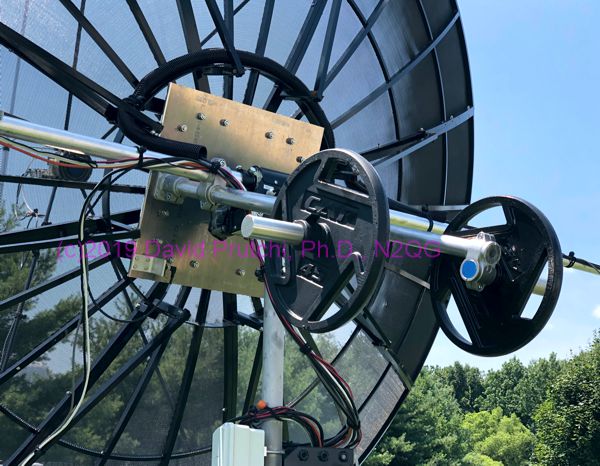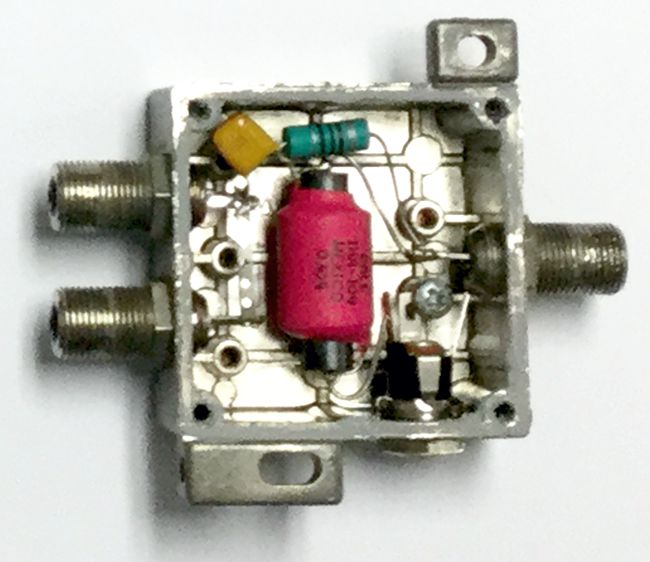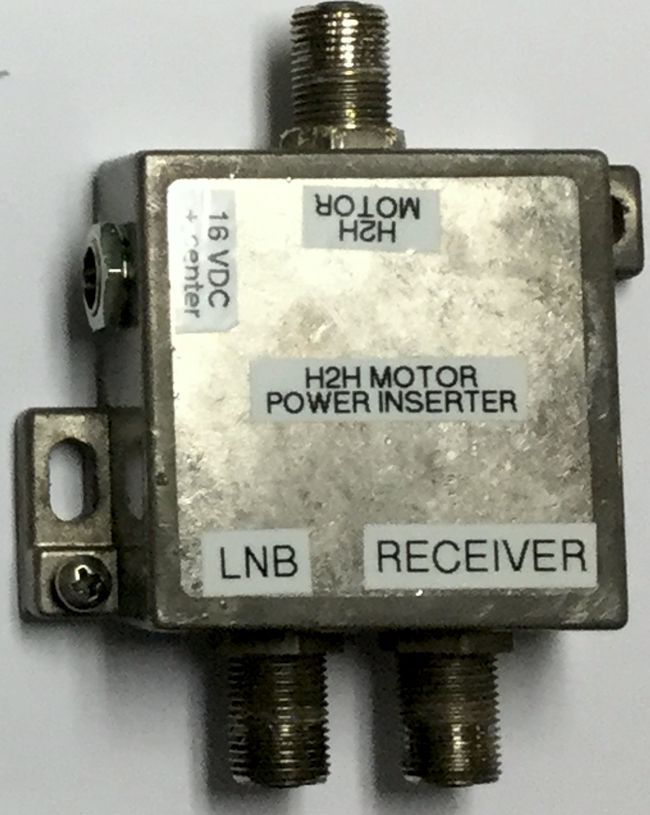
I was cleaning up the basement, and found a box with my old pictures. This one brought me fond memories. This was my house (well, my parent’s house) in 1980. Back then my callsign was “HC1DT.” I had a TH3 on top of a tall tower, a 10m 3-element beam, and a bunch of home-made 2m verticals and beams.




 I am now concentrating the bulk of my ham activities in the microwave region, and have CW EME and amateur DSN as my top projects. My goal was thus to install a relatively large prime-focus dish to be moved by a heavy-duty Az/El rotator.
I am now concentrating the bulk of my ham activities in the microwave region, and have CW EME and amateur DSN as my top projects. My goal was thus to install a relatively large prime-focus dish to be moved by a heavy-duty Az/El rotator. It’s July 20, 2019, and I am invited to a private screening of the CNN Apollo 11 documentary, followed by a party with my fellow nerds, so I don’t really have time today to work the sats. It’s 102ºF outside, so not a good day to tweak the antennas either, but I nevertheless wanted to do something space-related to celebrate the 50th anniversary of the Apollo 11 Moon landing.
It’s July 20, 2019, and I am invited to a private screening of the CNN Apollo 11 documentary, followed by a party with my fellow nerds, so I don’t really have time today to work the sats. It’s 102ºF outside, so not a good day to tweak the antennas either, but I nevertheless wanted to do something space-related to celebrate the 50th anniversary of the Apollo 11 Moon landing.









